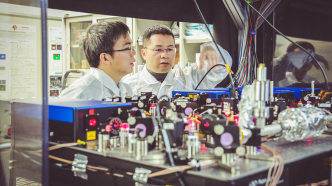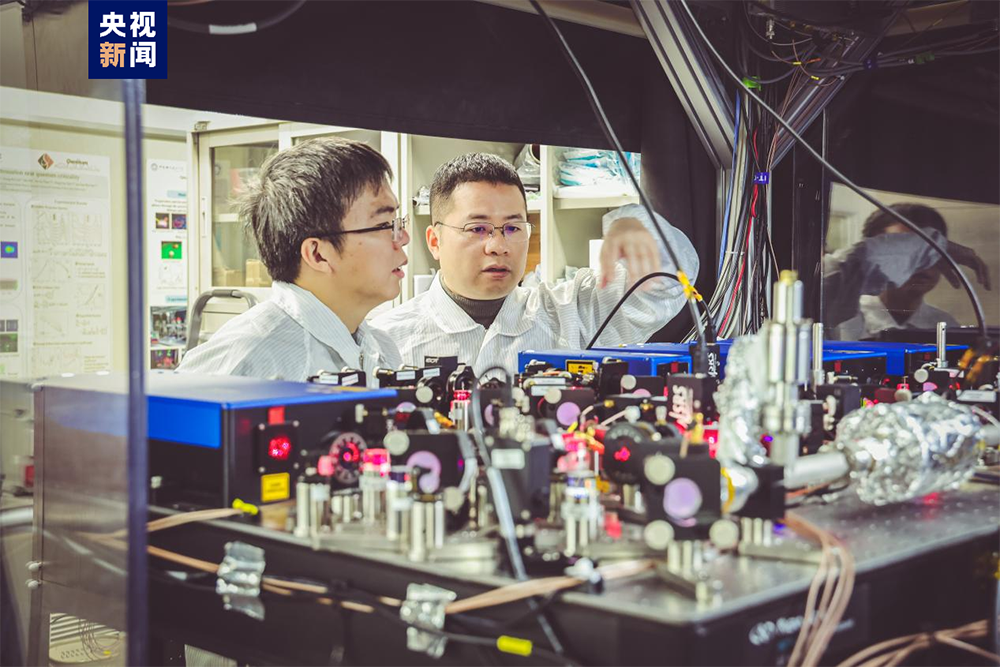

Yao Xingcan and Chen Yuao of the University of Science and Technology of China conduct scientific research in the laboratory. CCTV news map
Why does high-temperature superconductivity occur? This is a major topic in physics research. Recently, Pan Jianwei, Yao Xingcan, Chen Yuao and others from the University of Science and Technology of China observed for the first time the pseudogap generated by many-body pairing based on the strongly interacting uniform Fermi gas, taking an important step towards understanding the mechanism of high-temperature superconductivity. On February 8, the international academic journal Nature published the research results.
In 1911, Dutch physicist Kamerling Onnes discovered that when the temperature drops to about minus 277 degrees Celsius, the resistance of mercury metal will drop to zero. This is the phenomenon of superconductivity. If a "superconductor" with zero resistance at room temperature can be developed, it will significantly improve human production and life.
For more than 100 years, the international scientific community has continuously promoted research on the mechanism of superconductivity. The BCS theory proposed in 1957 successfully explained the "why" of superconductivity at the microscopic level. The three scientists who proposed the theory won the Nobel Prize.
"Cartoonist Mr. Hua Junwu once drew a picture that vividly explains why superconductivity occurs at low temperatures." Professor Yao Xingcan of the University of Science and Technology of China said that if electrons are compared to bees with only one wing, they cannot overcome them at normal temperatures. They fly up due to resistance, but when they reach the critical temperature of superconductivity, they will "pair up" with two wings, fly in a group in one direction, and form an electric current without resistance. This is the phenomenon of low-temperature superconductivity.
But in 1986, some scientists discovered a new material that could produce superconducting effects at about minus 238 degrees Celsius. This high-temperature superconducting phenomenon made it difficult for the BCS theory to explain. The scientific community has hypothesized that electrons inside this material will also "pair up" above the superconducting temperature, but they will "fly around" and the flow of electrons will still be blocked.
BCS theory believes that this "pair-ordered flight" will create an energy gap. The electron pre-pairing hypothesis believes that "pairing but flying around" can produce a pseudo-energy gap. Studying the origin and nature of the pseudogap has become one of the key issues in understanding the mechanism of high-temperature superconductivity.
After more than four years of hard work, Pan Jianwei's team has recently made important progress in researching pseudo-energy gaps. They established an ultracold lithium-dysprosium atom quantum simulation platform and successfully realized microwave spectroscopy technology with ultracold atomic momentum-resolvable technology through the world's most advanced uniform Fermi gas preparation and large magnetic field stabilization technology. On this basis, the single-particle spectral function of unitary Fermi gas at different temperatures was systematically measured, and the existence of a pseudogap was successfully observed for the first time, providing support for the electron pre-pairing hypothesis.
Multiple reviewers of Nature magazine believed that "this work solves an important long-standing physical problem and is a milestone in quantum simulation research."
According to scientific researchers, humans have used superconducting technology to develop products such as nuclear magnetic resonance and maglev trains. In the future, if the mechanism of high-temperature superconductivity is fully understood, more valuable applications are expected to be developed.